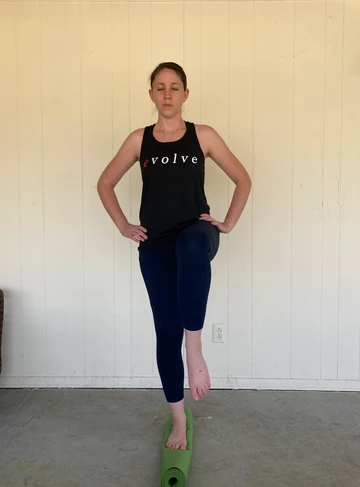by Samantha Herrera, DPT and Kelsea Brajkovich Schroeder, DPT
One good thing that may come out of kids spending so much time at home is the opportunity to be barefoot for more of the day. The shape of a person’s foot is influenced by the shape of their bones, the laxity of their ligaments, the strength of the muscles of the foot and the shape of their footwear. In many cultures, it’s stylish to wear shoes with a rigid sole that tapers to a point at the end of the toes. Human feet, however, are not anatomically shaped that way. For some people, squishing the toes together in narrow shoes can lead to deformities, such as bunions and hammer toes. For others, the combination of the rigid sole and squished toes can lead to weakness of the muscles in the feet.

Research has shown that regularly performing activities barefoot may improve the balance and jumping skills of young children. It’s also been found that habitually barefoot individuals have increased arch height, decreased bunion formation and improved foot flexibility.
Some situations do call for your children to wear shoes, whether it’s while out and about in the community or on that great hike you may have planned on the weekend. Below are some recommendations we have to help your child continue strengthening their developing foot in a natural way with the protection of a flexible rubber sole.
Still learning to walk? Check out Soft Star Shoes
Toddlers to Adolescents? Splay Shoes and Vivobarefoot are great places to start.
Balance in Motion
Here are a few easy ways to challenge your child’s foot strength and balance to improve their ability to navigate variable terrains and surfaces using objects you can find around your home!
Toe Yoga
Yoga for your toes? An awesome trick to show off to your siblings? Or both?!
Keeping the ball of the foot and heel planted on the ground, lift only your big toe while keeping your little toes on the ground. Switch it up by planting your big toe and lifting those little toes without rolling your foot sideways. See below for a great example. First, try it while sitting. Progress to standing, and eventually try completing it while standing on one leg!
Single Leg Balance
Perform this exercise on flat ground while standing on one leg with your hands on your hips. Be sure to perform on both sides!
Children 4 years old should have a goal of 5 seconds on one leg on even ground.
Children 5 years old may be ready for a challenge by adding a raised/uneven surface. They should have a goal of standing on one leg for at least 10 seconds on even ground and then trying to maintain balance for 1-2 seconds with the addition of a raised/uneven surface beneath their foot.
The goal increases in time as children age. Once they are 10-11 years old, the goal should be 30 seconds on one leg.
Single Leg Balance on Beam
How long can you hold this position while standing on a balance beam? Don’t have a balance beam at home? Try using a rolled bath towel or yoga mat!

Single Leg Balance on Beam w/ Eyes Closed
Is standing on that yoga mat or towel too easy? How do you do with your eyes closed?! Try to balance for 10 seconds with your eyes closed! (Have someone there to catch you, just in case!)

Heel to Toe Walking on a Line
Ready to challenge your balance while moving? Grab some masking tape or painter’s tape and create a simple balance challenge as shown below:
Heel to Toe and Side Steps on a Towel Roll
Still too easy? Use that towel roll again to challenge moving balance on an uneven surface!
At-Home Obstacle Course
Search for objects of different textures, heights and pliability. Incorporate various jumping tasks to increase the challenge and input into your child’s neuromuscular system to prepare their bodies and feet for future encounters with obstacles: i.e. couch cushions/pillows, rough doormats, grass, bubble wrap, rolled yoga mat, dried beans/rice in a box, oobleck in bin. First, try it with eyes open. Try it again with eyes closed and then again with textures arranged in a different order.
Red Light/Green Light
It may seem like a simple game, but it’s a great way to incorporate core strength, control, balance and, of course, some giggles, into activities by challenging your child’s ability to accelerate and decelerate on the spot!
Red Light/Green Light Hops
Red Light/Green Light Side Steps
Is regular Red Light/Green Light too simple? Try these variations!
Email us with any additional questions about physical activity, foot strength, balance and footwear for your kids!
samantha@evolution-pt.com (Brentwood Location)
kelsea@evolution-pt.com (Playa Vista/South Bay Location)




